Hey there, fellow food enthusiasts! Today I’m super excited to share my absolute favorite recipe and techniques for making seitan chicken that’ll blow your mind I’ve been experimenting with plant-based cooking for years now, and let me tell ya, making your own seitan chicken at home is a total game-changer Not only is it way cheaper than store-bought options, but you get to control exactly what goes in it. Plus, there’s something weirdly satisfying about making “meat” from scratch!
If you’ve never made seitan before, don’t worry – I was totally intimidated at first too. But after many (many!) kitchen experiments, I’ve finally perfected my chicken-style seitan recipe that’s tender, flavorful, and versatile enough to use in practically any dish that calls for chicken.
So let’s dive right in shall we?
What Exactly Is Seitan Anyway?
Before we get into the nitty-gritty of making seitan chicken, let’s quickly cover what seitan actually is. Seitan (pronounced say-tan) is basically wheat gluten that’s been cooked and seasoned. It’s been around for centuries, originating in Asian cuisine, particularly in Buddhist vegetarian cooking.
When you wash away the starch from wheat dough, what remains is a protein-rich, stretchy substance – that’s your vital wheat gluten. When cooked, it transforms into a chewy, meaty substance that’s incredibly versatile and can absorb flavors brilliantly.
The Essential Ingredients for Amazing Seitan Chicken
To make really good seitan chicken, you’ll need a few key ingredients:
- Vital wheat gluten – This is the main ingredient and the foundation of your seitan. It provides the protein and the meaty texture.
- Chickpea flour – This helps soften the texture so it’s not too rubbery.
- Nutritional yeast – Adds a savory depth of flavor that’s slightly “umami.”
- Spices and seasonings – This is where you can really customize to get that “chicken-y” flavor.
- Vegetable broth – For moisture and flavor.
- Soy sauce or tamari – Adds saltiness and depth.
- Oil – Adds moisture and tenderness to your seitan.
My Tried-and-True Seitan Chicken Recipe
Alright, let’s get to the good stuff! Here’s my go-to recipe for chicken-style seitan that’s been perfected over many iterations. This recipe makes about 2 pounds of seitan chicken, which is enough for several meals.
Ingredients:
For the broth
- 8 cups vegetable broth (I recommend using a “chicken-style” vegetable broth if available)
- 6 cloves garlic, smashed
- 2 bay leaves
For the seitan:
- 2 cups vital wheat gluten
- 1/4 cup nutritional yeast
- 1/4 cup chickpea flour
- 1/4 teaspoon salt
- 2 teaspoons onion powder
- 1 teaspoon dried sage
- 1 1/4 cups vegetable broth
- 1/4 cup soy sauce
- 2 teaspoons olive oil
Instructions:
-
Prepare the simmering broth: Fill a large pot with the vegetable broth, smashed garlic, and bay leaves. Cover and bring to a boil while you prepare the seitan dough.
-
Mix the dry ingredients: In a large bowl, combine the vital wheat gluten, nutritional yeast, chickpea flour, salt, onion powder, and dried sage. Mix well to ensure even distribution of all ingredients.
-
Add wet ingredients: Make a well in the center of your dry ingredients and pour in the 1 1/4 cups of vegetable broth, soy sauce, and olive oil.
-
Form the dough: Start mixing with a fork, then use your hands to knead the dough for about 3 minutes. You want it to be firm and well-incorporated. Don’t overknead or your seitan might become too chewy!
-
Divide and shape: Divide the dough into 8 equal pieces. An easy way to do this is to first cut the dough in half, then cut each half into four pieces. Shape each piece into a cutlet by stretching and pressing it against your countertop to smooth the surface.
-
Simmer the seitan: Once your broth has come to a full boil, reduce the heat to a simmer. This is super important – if the broth is boiling too vigorously, your seitan might get waterlogged and turn into a brain-like texture (not appetizing!). Add your seitan pieces to the simmering broth and partially cover the pot so steam can escape.
-
Cook: Let the seitan simmer for 45 minutes, occasionally turning the pieces. Keep an eye on the heat level to maintain a gentle simmer.
-
Cool and store: When done, you can either use the seitan right away or let it cool in the broth. Once cooled, store it in a container submerged in the broth in the refrigerator.
Tips for Perfect Seitan Chicken Every Time
Over my many seitan-making adventures, I’ve learned some valuable lessons that I’m happy to share with you:
1. Don’t Overknead!
This is probably the most common mistake people make when preparing seitan. Kneading develops the gluten structure, making it stretchier and chewier. For chicken-style seitan, we want it tender, not tough, so keep kneading to about 3 minutes.
2. Temperature Control is Crucial
Never, ever boil your seitan at a rolling boil. This is a one-way ticket to spongy, brain-like seitan that nobody wants to eat. Keep it at a gentle simmer the whole time.
3. Flavor Your Broth Well
Since seitan absorbs the flavors of what it’s cooked in, make sure your simmering broth is well-seasoned. I sometimes add additional herbs like thyme or rosemary to enhance the chicken-like flavor.
4. Let It Rest
If you can, let your seitan cool completely in its broth before using it. The texture and flavor will continue to develop as it sits.
5. Get Creative with Shapes
Depending on how you plan to use your seitan, you can shape it differently. For cutlets, flatten it out. For chunks, you can tear it into irregular pieces before simmering.
Delicious Ways to Use Your Homemade Seitan Chicken
Now that you’ve got this amazing homemade seitan chicken, what do you do with it? The possibilities are endless! Here are some of my favorite ways to use it:
- Stir-fries – Cut into strips and toss into your favorite stir-fry
- Sandwiches – Grill or pan-fry thin cutlets for amazing sandwiches
- Curry – Cube it and add to curries for a protein boost
- Chicken noodle soup – Yes, you can make vegan chicken noodle soup!
- Buffalo “wings” – Cut into nugget shapes, bread, and coat with buffalo sauce
- Tacos and burritos – Season with Mexican spices and use as a filling
- Chicken and waffles – A vegan twist on the classic southern dish
Troubleshooting Common Seitan Problems
Even with the best recipe, things sometimes go wrong. Here are solutions to common seitan issues:
Problem: My seitan turned out spongy and brain-like
Solution: Your simmering liquid was probably boiling too vigorously. Next time, keep it at a very gentle simmer.
Problem: My seitan is too rubbery and tough
Solution: You likely kneaded the dough too much. Try kneading less next time and consider adding more chickpea flour to soften the texture.
Problem: My seitan is bland
Solution: Boost the flavors in both your dough and simmering broth. Don’t be shy with seasonings!
Problem: My seitan fell apart during simmering
Solution: You might not have kneaded it enough to develop sufficient gluten structure. Try kneading a bit more next time.
Storing Your Homemade Seitan Chicken
Good news – seitan stores really well! Here’s how to keep it fresh:
- Refrigerator: Store in an airtight container, submerged in its broth, for up to a week.
- Freezer: You can freeze seitan for up to 3 months. I recommend draining it from the broth, wrapping portions in foil or plastic wrap, then placing in freezer bags.
Taking Your Seitan to the Next Level
Once you’ve mastered the basic recipe, you might want to experiment with variations:
Different Flours
Try incorporating different flours for texture variations. Some options include:
- White bean flour
- Tofu (technically not a flour, but adds tenderness)
- Chickpea flour (as we used in our recipe)
Cooking Methods
Beyond simmering, you can try:
- Steaming – Great for a firmer texture
- Baking – Wrap in foil and bake for a denser result
- Instant Pot – Pressure cooking can yield interesting results
Flavor Variations
- Smoky Chicken: Add liquid smoke and smoked paprika
- Herbed Chicken: Increase herbs like sage, thyme, and rosemary
- Spicy Chicken: Add cayenne or chili flakes to the dough
Frequently Asked Questions About Seitan Chicken
I get lots of questions about making seitan chicken, so let me address some of the most common ones:
Is seitan healthy?
Seitan is high in protein and low in fat, making it a nutritious choice for many. However, it’s not suitable for people with gluten sensitivities or celiac disease.
Can I make seitan without vital wheat gluten?
Not really – vital wheat gluten is the main ingredient that gives seitan its meaty texture. There are other plant-based meat alternatives like tofu or tempeh if you can’t consume gluten.
Why is my seitan bitter?
This can happen if your vital wheat gluten isn’t fresh or if you’ve added too much nutritional yeast. Make sure to use fresh ingredients and balance flavors carefully.
Can I air-fry seitan?
Absolutely! Pre-cooked seitan works great in an air fryer – it gets crispy on the outside while staying tender inside.
Final Thoughts
Making your own seitan chicken at home is truly rewarding. Not only do you save money, but you also get to create exactly the flavor and texture you prefer. Plus, there’s something really satisfying about creating “meat” from scratch using plant ingredients!
Do you have any questions about making seitan chicken? Or maybe some tips of your own to share? I’d love to hear from you in the comments below!
Happy cooking!
P.S. If you wanna get fancy, try serving your homemade seitan chicken with some homemade vegan waffles for an amazing chicken and waffles experience. Trust me, it’s worth the extra effort!
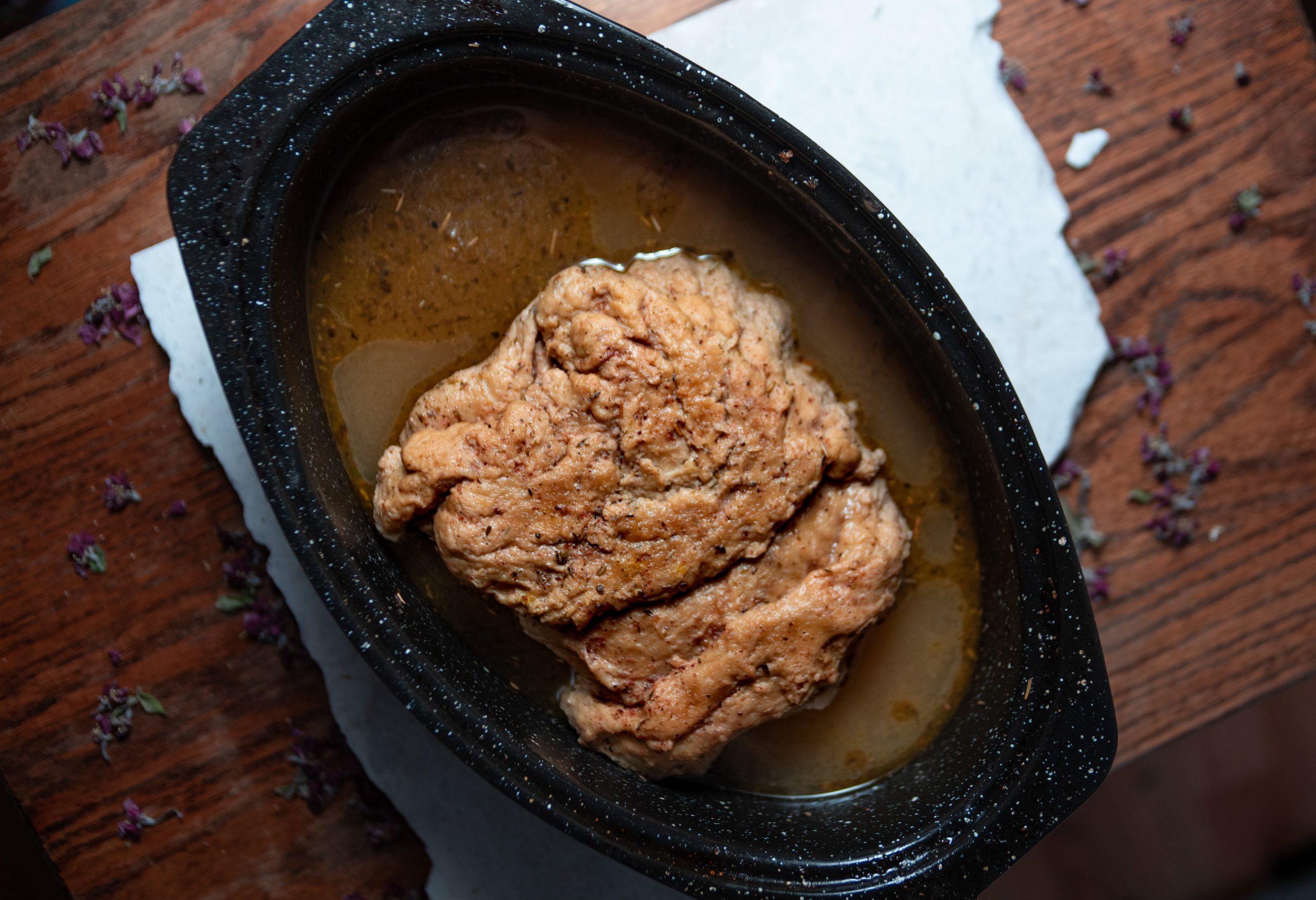
How to Make Seitan
This is an overview. The full instructions are in the recipe card below.
Seitan Vegan Beef and Chicken:
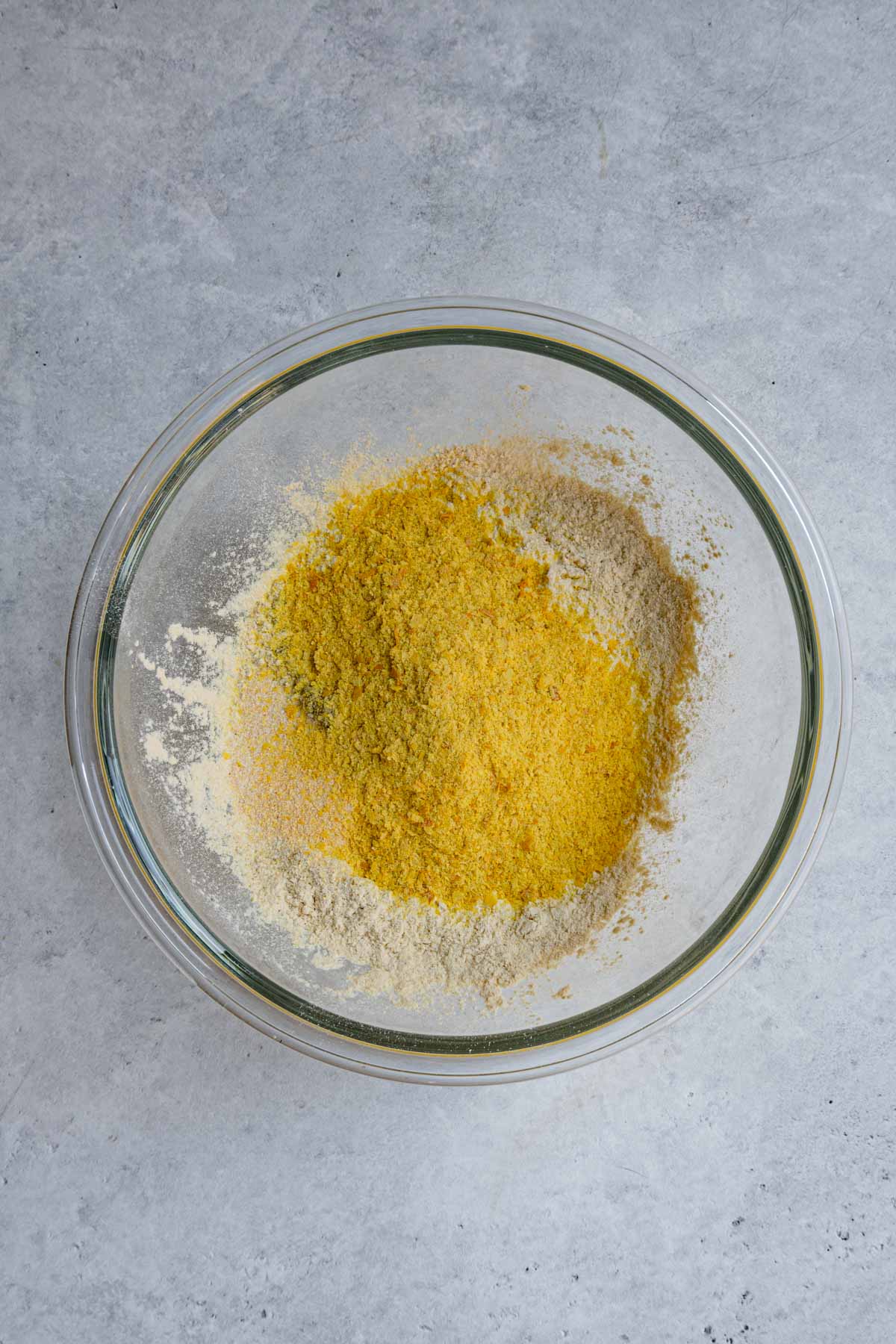
- In a medium bowl, combine the dry ingredients: vital wheat gluten, nutritional yeast, garlic powder, onion powder, and poultry seasoning.
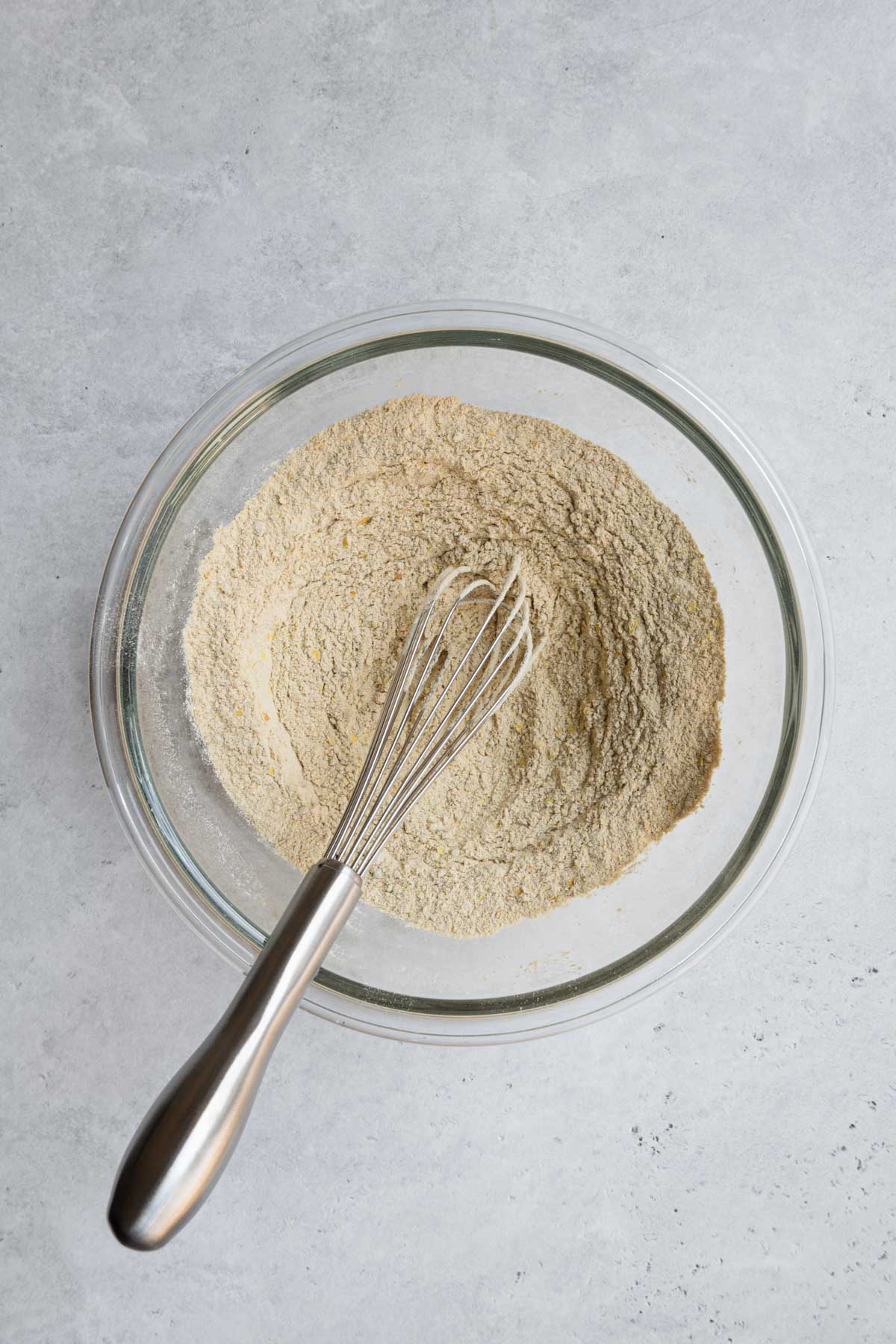
- Whisk well until fully combined.
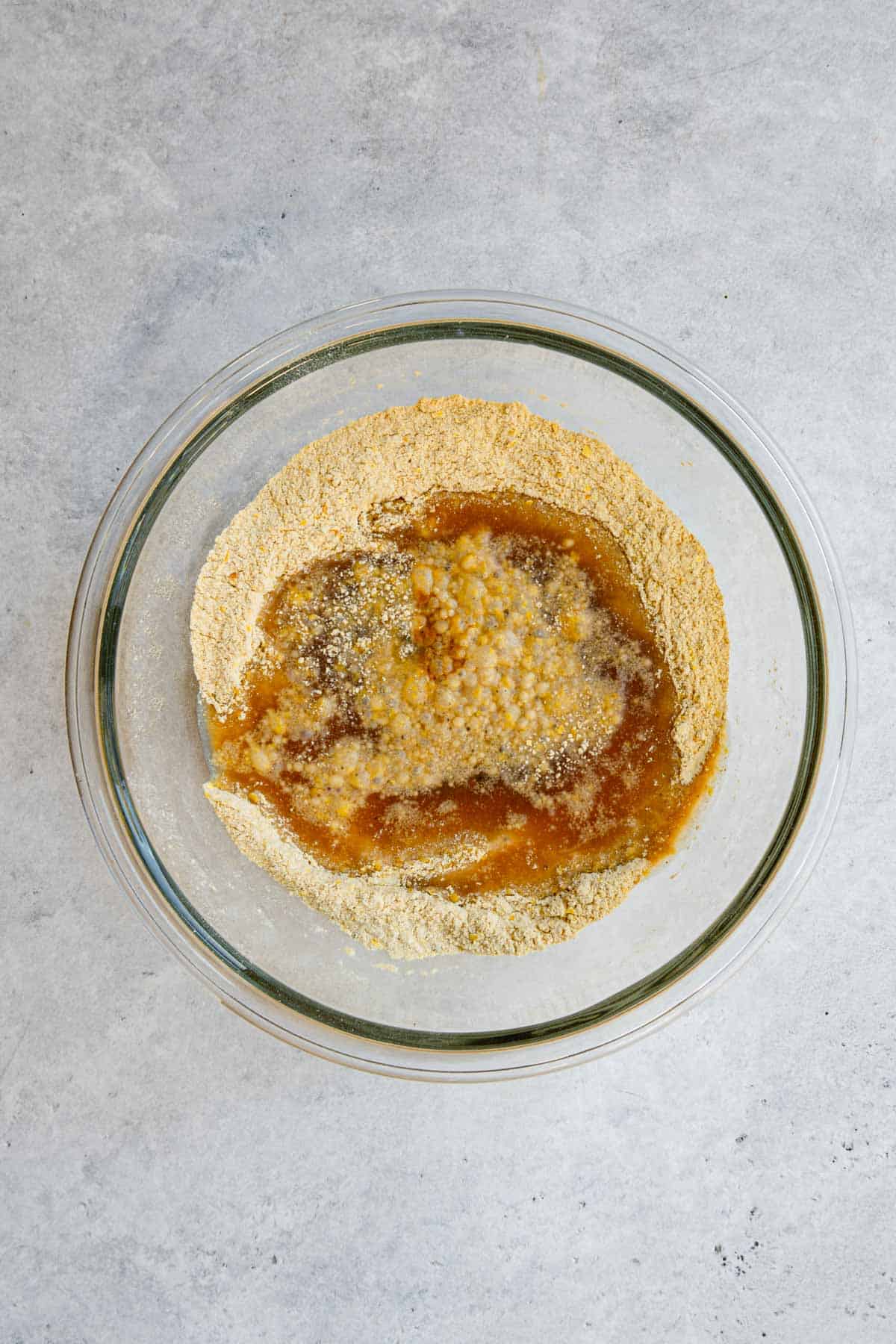
- Make a well in the center and add the tamari, date syrup, and vegetable broth.
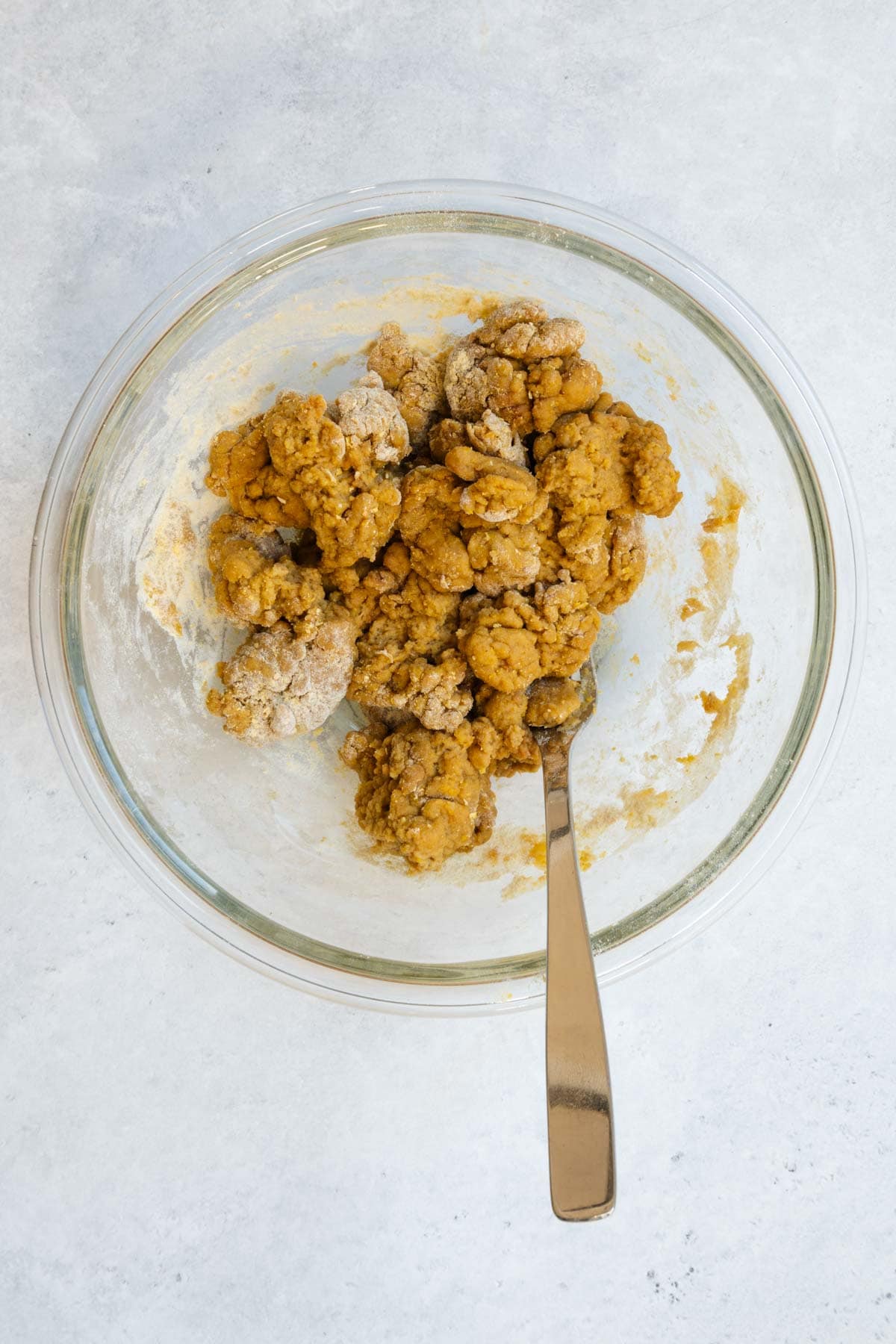
- Use a fork to mix until the dough comes together—it should be springy and slightly lumpy.
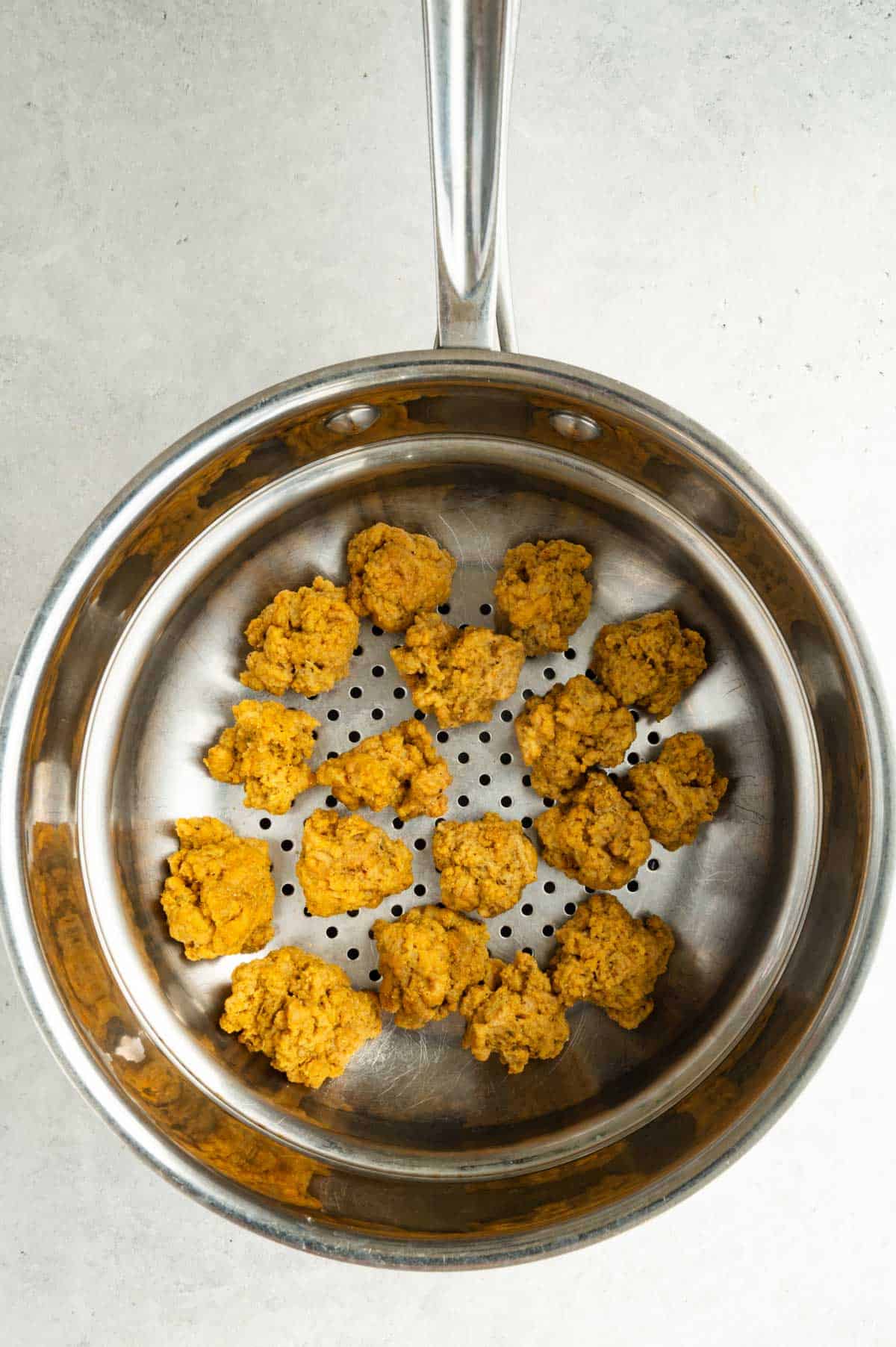
- Tear off 2-inch bite-sized pieces from the dough and roll them into balls. Place the balls in a steamer basket, ensuring they don’t touch. If necessary, steam in batches. Set the steamer over a saucepan with 1 cup of water and bring it to a vigorous simmer. Reduce the heat to low, cover, and steam for 10 minutes. Remove from heat, uncover, and let cool for a few minutes.
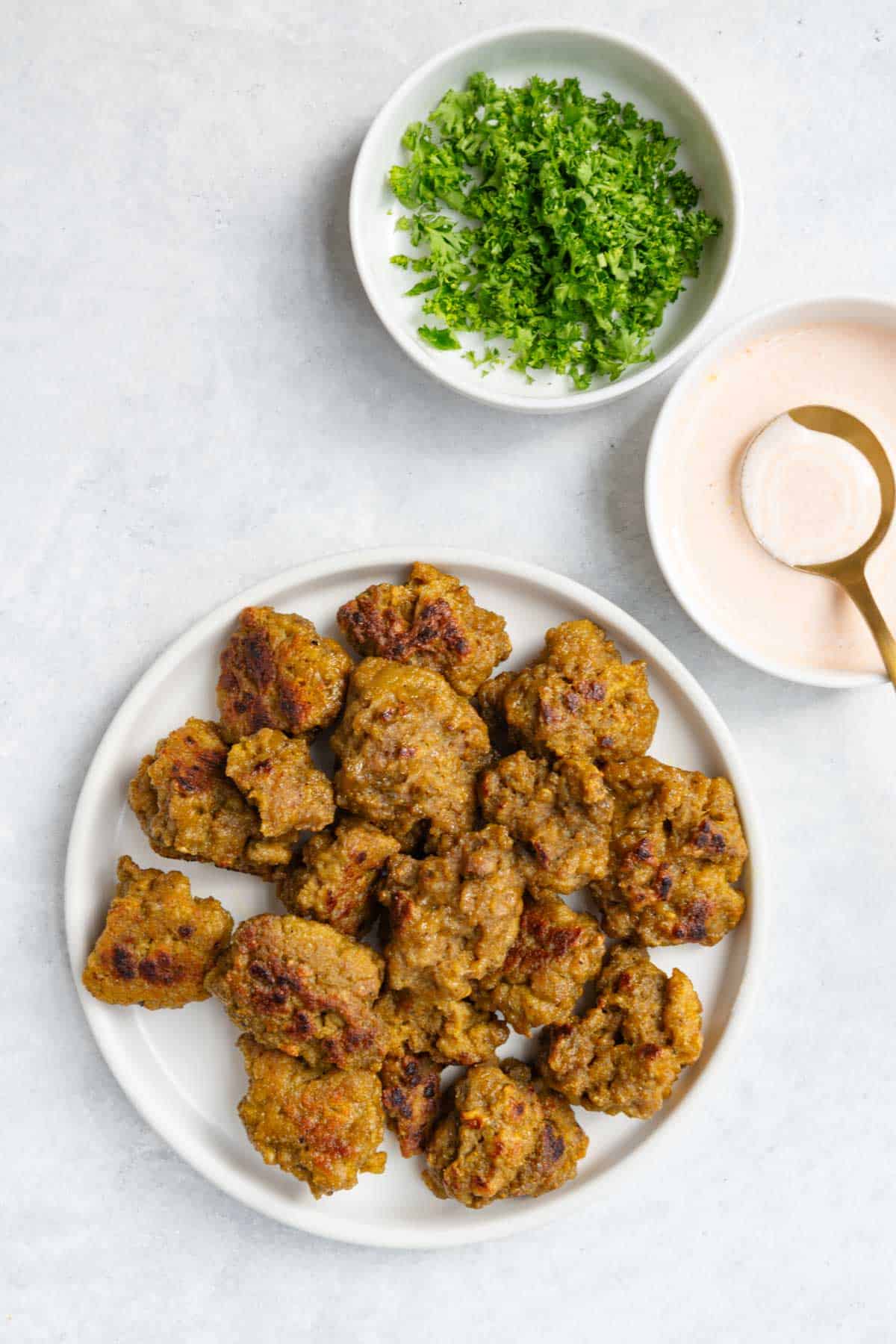
- The seitan chicken is now ready to eat. For extra flavor and texture, pan-fry in a little oil over medium-high heat for about 7 minutes, or until golden brown. Serve with a spicy yogurt sauce, or one of my healthy dressings.
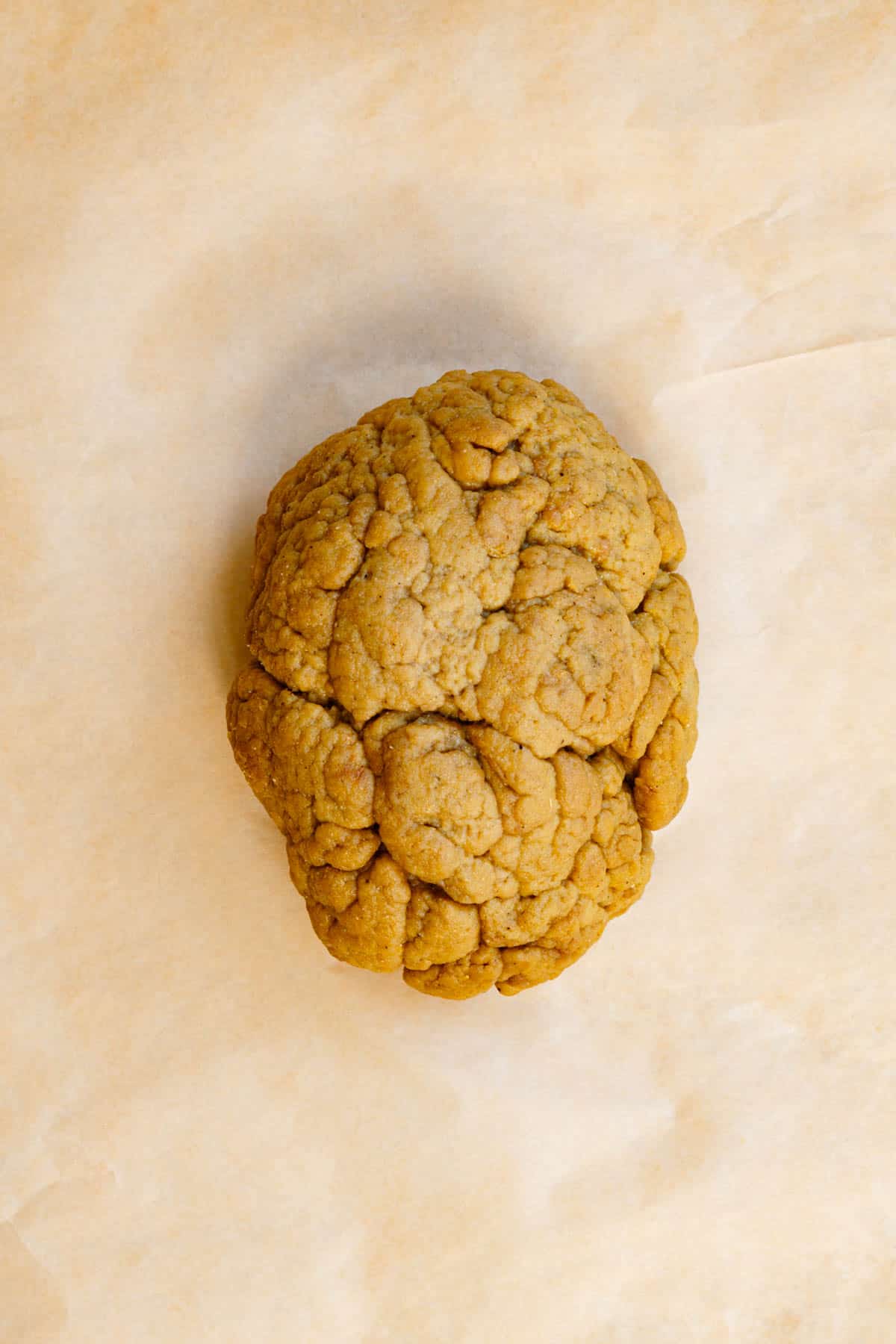
- Shape the dough into a log and wrap it in aluminum foil or parchment paper. Place it in a steamer basket over 3 cups of water. Bring to a vigorous simmer, then reduce the heat to low. Cover and steam for about 1 hour, or until firm.
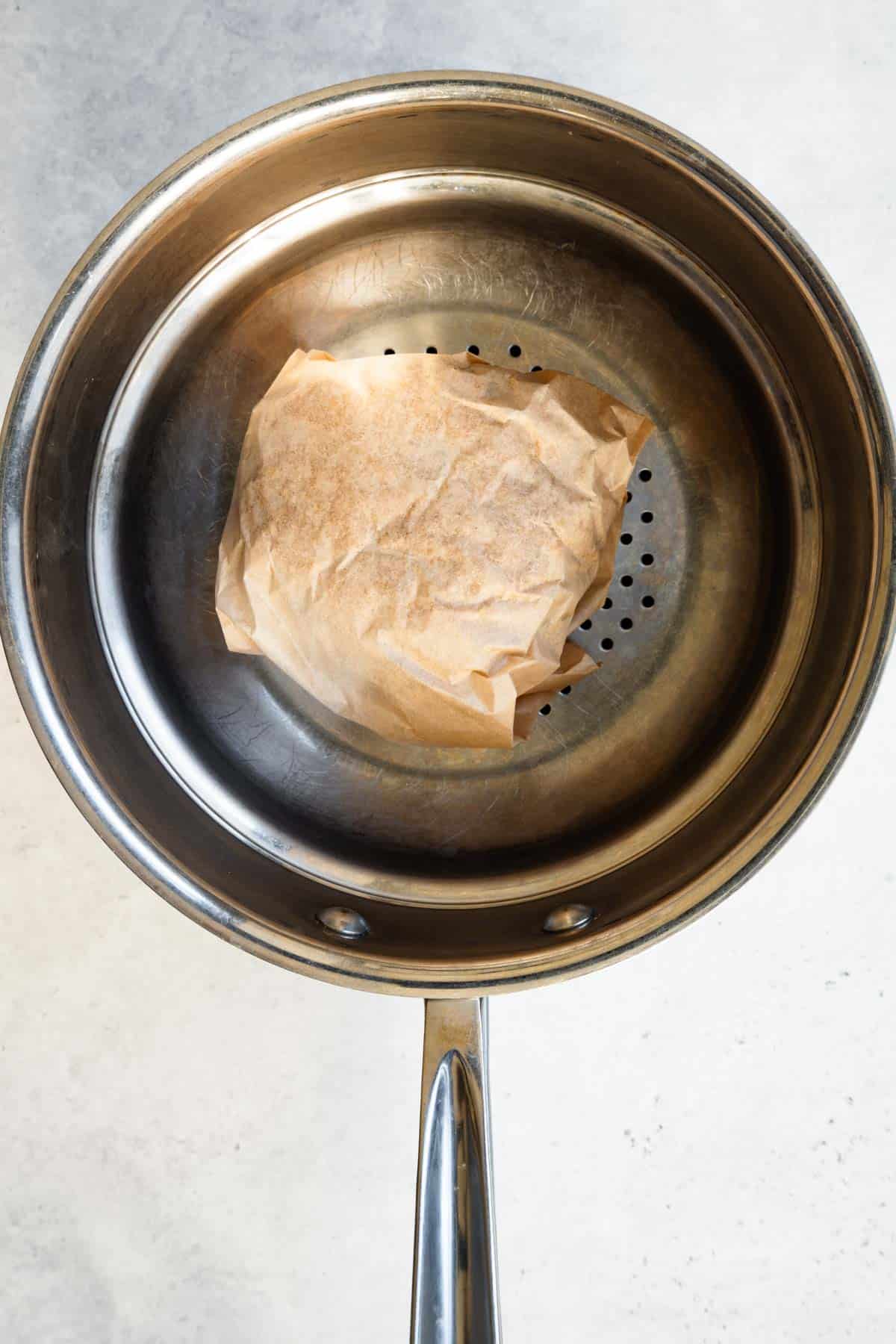
- Place it in a steamer basket over 3 cups of water. Bring to a vigorous simmer, then reduce the heat to low. Cover and steam for about 1 hour, or until firm.
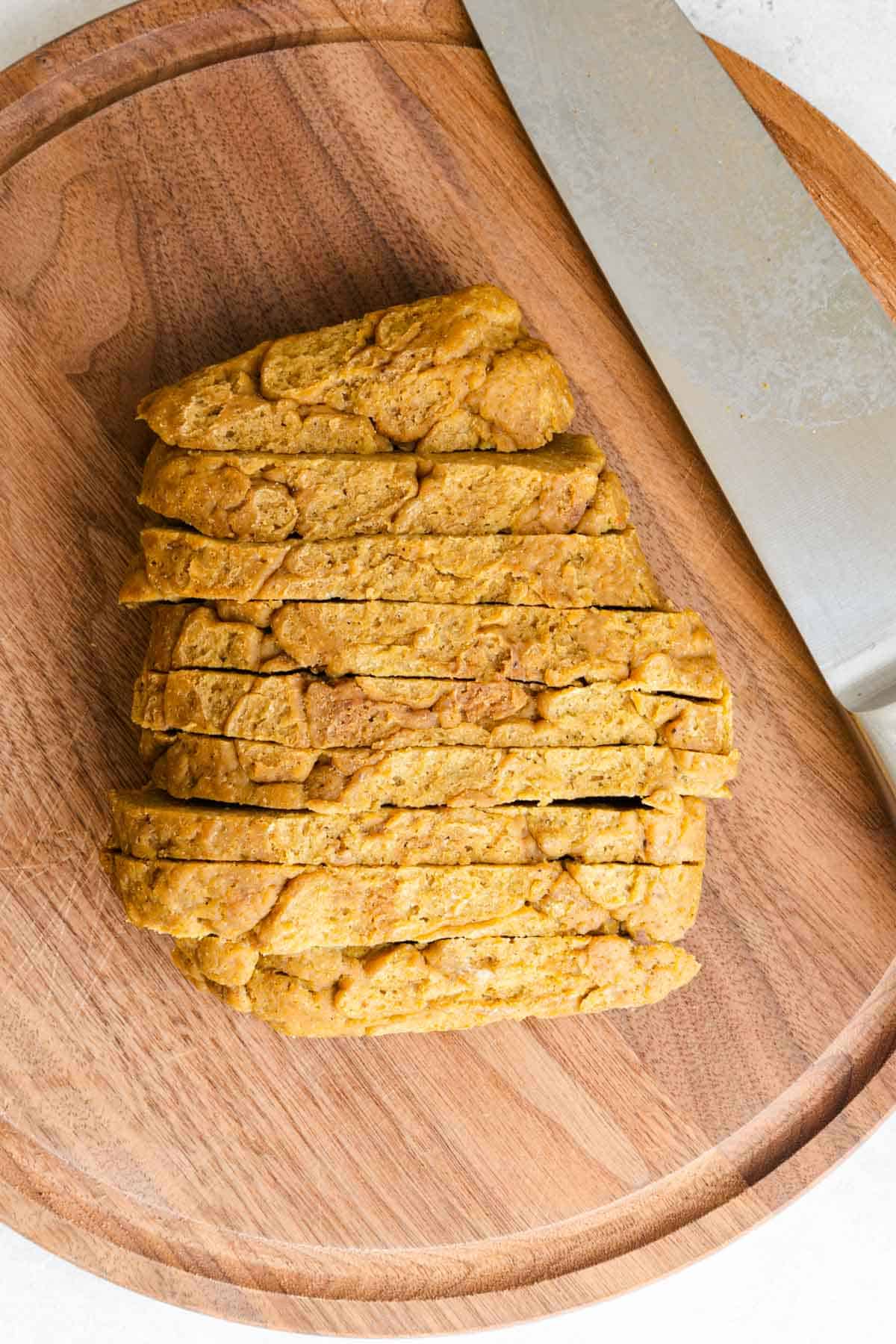
- Once done, let it cool for 10 minutes before slicing.
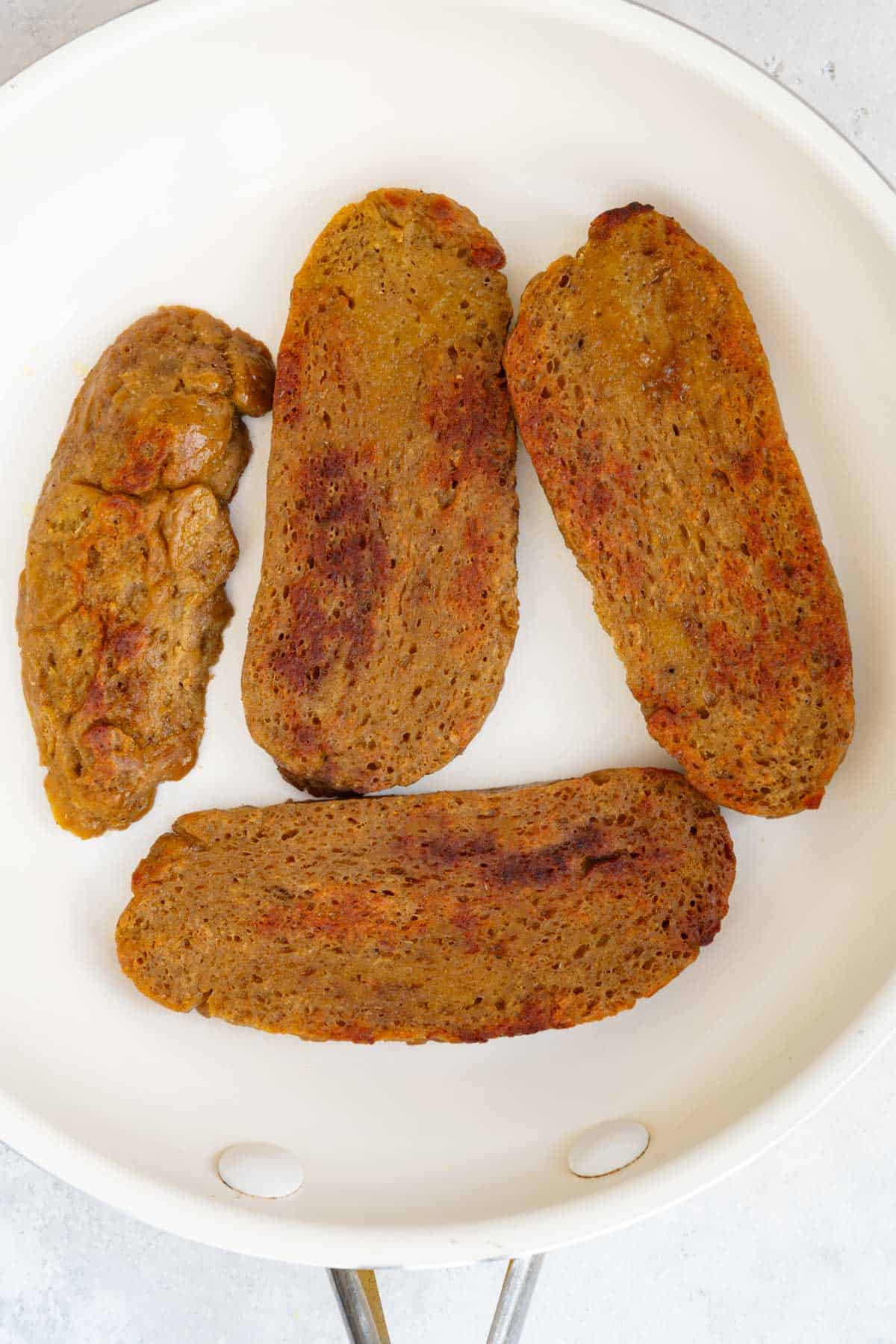
- Enjoy as is, or sear on the stovetop for a richer texture and flavor.

- For meal prep, you can pan-fry the seitan before storing. Alternatively, pan-fry seitan beef slices before serving to achieve a rich, golden crust.
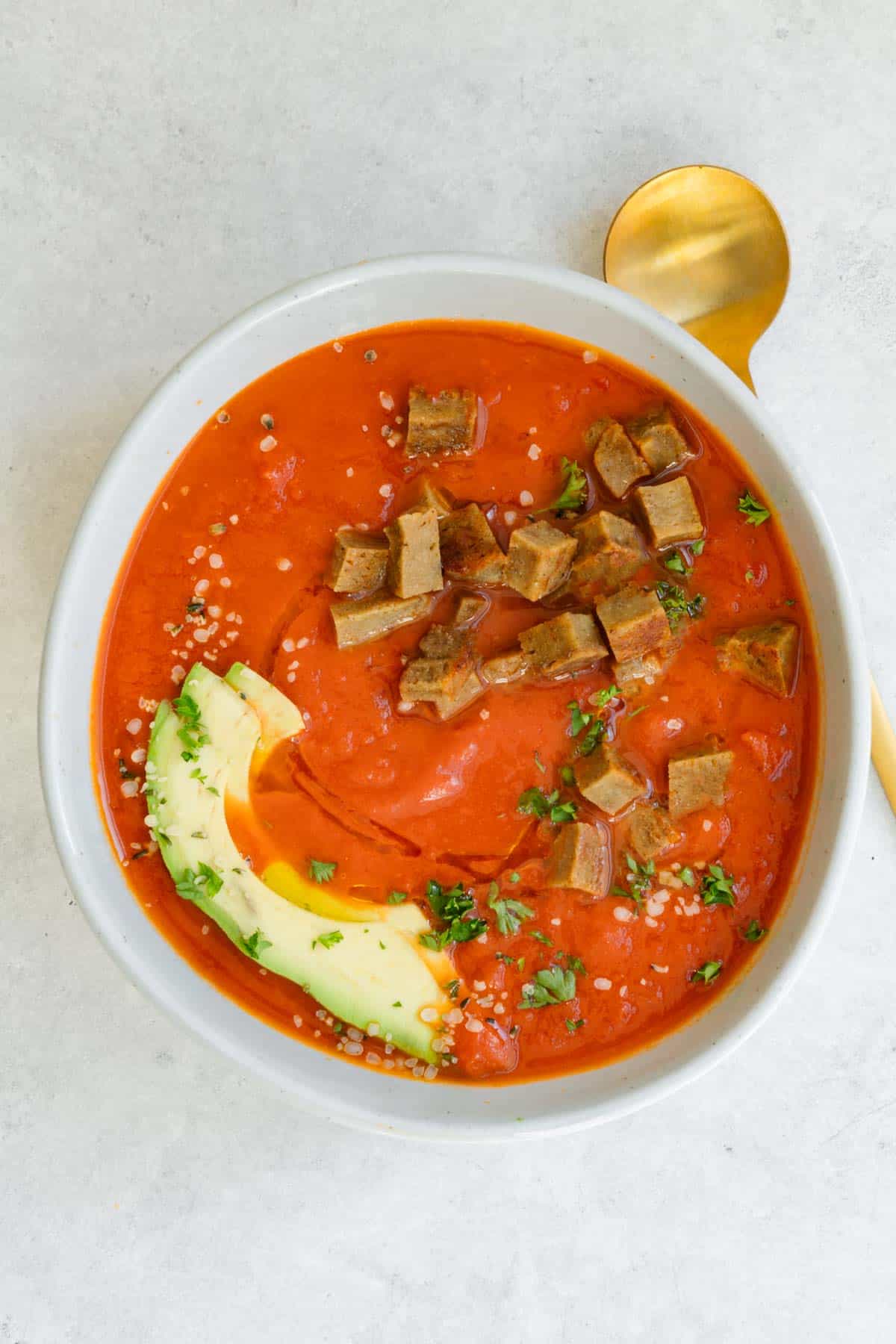
- Chop your seitan into cubes and add it to soups, salads, pasta, or grain bowls for an instant protein boost and extra texture in your meals.
- Don’t Overwork the Dough – Knead just enough for a firm texture; over-kneading makes it too tough.
- Simmer, Don’t Boil – Boiling can make seitan spongy; gently simmer in the broth for the best texture.
- Use a Flavorful Broth – Seitan absorbs surrounding flavors, so season your cooking liquid well.
- Adjust Cooking Time for Texture – Shorter cooking yields a softer texture, while longer cooking makes it firmer.
- Add Chickpea Flour or Tofu for Softness – Mixing in a little chickpea flour or blended tofu makes the seitan more tender.
- Slice Against the Grain – Cutting seitan against its natural fibers improves the bite and tenderness.
- Pan-Fry for the Best Flavor – After steaming, pan-fry seitan in a little oil or broth for a crispy, golden crust before serving.
- Cube It for Easy Protein Boosts – Cut seitan into cubes and toss it into soups, salads, or pasta for an easy way to increase protein in any meal.
- Store Properly – Keep seitan in an airtight container in the fridge for up to a week or freeze for long-term storage.
